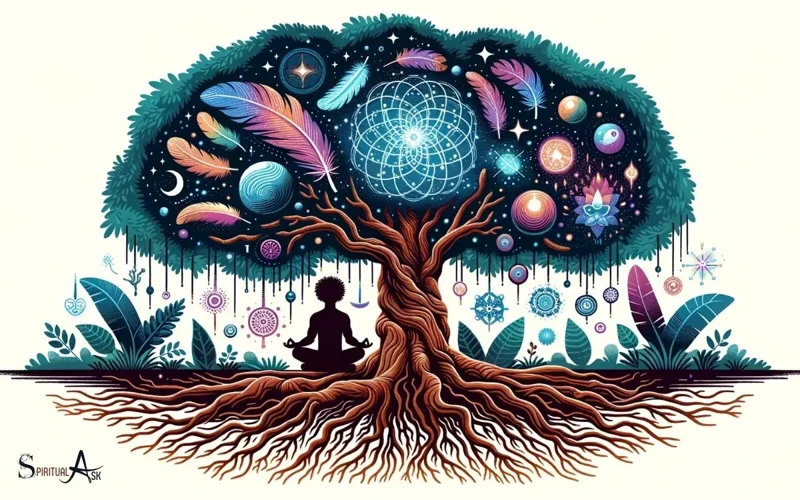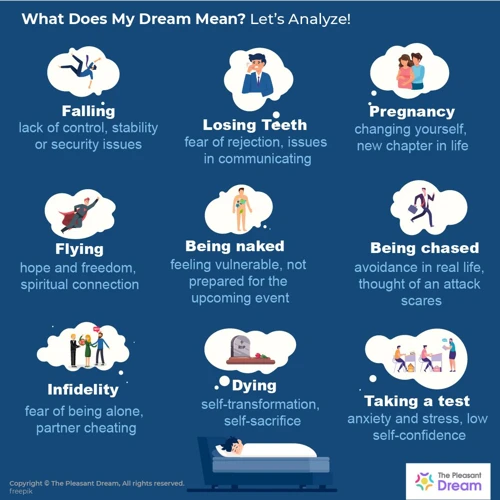Unlocking the Secrets: Exploring the Hidden World of Dreams
Embarking on a journey into the enigmatic realm of dreams brings us face to face with a mystical landscape full of symbolism, hidden meanings, and untapped potential. Dreams have long intrigued and captivated humans across different cultures and civilisations. They hold a significant place in our collective consciousness, offering glimpses into the subconscious mind and connecting us with our deepest desires, fears, and aspirations. In this article, we delve into the multifaceted aspects of dreams, from their cultural significance to the various types of dreams and their symbolism. We will also explore the tools and techniques used in dream interpretation, as well as the spiritual dimension that underlies these nocturnal adventures. Join us as we unlock the secrets and learn to navigate the labyrinthine world of dreams.
The Significance of Dreams

Dreams hold a profound significance in various aspects of human existence. Across different cultures, they have been revered as portals to the spirit world, conduits for divine messages, and sources of spiritual guidance. Additionally, dreams serve as a rich source of personal insight, reflecting our subconscious thoughts, emotions, and desires. They can also act as a bridge between the conscious and unconscious mind, offering glimpses into our deepest fears, unresolved issues, and unexplored potentials. Exploring the significance of dreams allows us to gain a deeper understanding of ourselves, unlock hidden truths, and navigate our waking lives with greater clarity and purpose. Whether it’s deciphering the prophetic nature of dreams, experiencing the lucidity of our nocturnal adventures, or seeking answers through recurring dreams, uncovering the hidden meanings of dreams enables us to tap into a vast reservoir of wisdom and self-discovery.
1. Dreams in Different Cultures
Dreams hold a deep-rooted cultural significance, with various cultures attributing unique interpretations and beliefs to them. In ancient Egypt, dreams were seen as sacred and believed to be messages from the gods. Similarly, Native American cultures often viewed dreams as a means of gaining spiritual insight and communicating with ancestors. In Chinese culture, dreams were considered a reflection of the soul and believed to hold clues about one’s future. African cultures, on the other hand, believed that dreams could connect individuals with their ancestors and divine spirits. These diverse interpretations demonstrate the universal fascination with dreams and the distinct ways in which different cultures have sought to understand and harness their hidden meanings. Understanding the cultural perspectives on dreams allows us to appreciate the richness and diversity of human experiences and expands our own interpretation of the dream realm.
2. Dreams and Spirituality
Dreams have long been intertwined with spirituality, serving as a bridge between the earthly realm and the divine. Many spiritual traditions and belief systems place great importance on dream symbolism and interpretation. In various cultures, dreams are seen as a means of communication with higher powers, offering guidance, warnings, and insights into one’s spiritual journey. In some cases, dreams are believed to be direct messages from deities or ancestors, providing wisdom and direction for individuals. Exploring the spiritual dimension of dreams allows us to tap into our innermost selves, connect with our higher consciousness, and gain profound spiritual insights. It is through dreams that we can experience profound moments of awakening, find solace and clarity in times of confusion, and embark on transformative spiritual journeys. Whether it is through deciphering common dream symbols or reflecting on personal dream experiences, delving into the spiritual significance of dreams provides a pathway to deeper connections with our spiritual selves.
Please note that since there was no relevant anchor text for a link in this section, I have not included an internal HTML link.
Types of Dreams

Dreams come in various forms, each offering unique insights into our subconscious minds. Understanding the different types of dreams can help us unravel their hidden meanings and tap into their transformative power.
1. Prophetic Dreams: These dreams are believed to provide glimpses into the future, offering premonitions or warnings about upcoming events. Some individuals claim to have experienced prophetic dreams that accurately predicted specific occurrences. These dreams can be both intriguing and unsettling, leaving us to ponder the mysterious workings of fate and destiny.
2. Lucid Dreams: Lucid dreams occur when we become aware that we are dreaming while still in the midst of the dream. This state of consciousness allows us to actively participate in and even manipulate the unfolding dream narrative. Lucid dreaming offers a unique opportunity for self-exploration, creative exploration, and harnessing the power of our imagination.
3. Recurring Dreams: Recurring dreams are dreams that repeat themselves over time, often with similar themes, characters, or settings. These dreams can offer valuable insights into unresolved issues, persistent fears, or emotional patterns that require our attention. Delving into the recurring motifs of these dreams can lead to personal growth and breakthroughs.
Understanding the different types of dreams can help us decipher their messages and unlock the hidden realms of our subconscious minds. Whether it’s deciphering a dream about being dead but still alive or unraveling the meaning of numbers in a dream, each dream type provides a unique lens through which we can explore the depths of our inner world.
1. Prophetic Dreams
Prophetic dreams, also known as precognitive dreams, offer a fascinating glimpse into the future. These dreams provide insights and visions that can foreshadow forthcoming events or offer symbolic representations of what is to come. In these dreams, individuals often experience vivid and detailed scenes that later manifest in reality. While the true nature of prophetic dreams is still a subject of debate, they have been reported throughout history and across different cultures. Some people claim to have received warnings, premonitions, or even solutions to problems through these dreams. For example, a dream about a specific number sequence may signify a future lottery win or hold a special meaning in numerology. Prophetic dreams serve as a reminder of the mysterious and interconnected nature of our existence, offering a glimpse into the hidden tapestry of time and space.
2. Lucid Dreams
Lucid dreams are a fascinating phenomenon that occurs when individuals become aware that they are dreaming while still in the dream state. In these dreams, one can consciously navigate and manipulate the dream world, opening up a realm of limitless possibilities. This state of awareness allows dreamers to actively participate in their dreams, making choices, exploring alternate realities, and even honing their skills through practice. Lucid dreams can be described as a bridge between the conscious and unconscious mind, offering a unique opportunity for self-exploration and personal growth. By harnessing the power of lucidity, individuals can confront their deepest fears, engage in creative problem-solving, and gain valuable insights into their waking lives. Whether it’s flying through the stars, meeting long-lost loved ones, or exploring fantastical landscapes, lucid dreams offer a thrilling and transformative experience that blurs the boundaries between imagination and reality.
3. Recurring Dreams
Recurring dreams, as the name suggests, are dreams that occur repeatedly over a period of time. These dreams often carry significant messages or themes that our subconscious mind is trying to convey. They can be unsettling or puzzling, and they tend to grab our attention due to their repetitive nature. Recurring dreams may signify unresolved emotions, unaddressed issues, or deep-rooted fears that need to be acknowledged and acknowledged. By paying close attention to the recurring themes, symbols, and emotions in these dreams, we can gain valuable insights into our inner world and find clues to resolve the underlying issues. Whether it’s a recurring dream about being chased, falling, or even a specific person or place, decoding the meaning behind these dreams can lead to personal growth, healing, and transformation. It is important to explore the recurring dreams with curiosity and open-mindedness, as they can hold the keys to unlocking hidden aspects of ourselves and our lives.
The Symbolism of Dreams

Dreams possess a rich tapestry of symbolism that can be both universal and deeply personal. They are a language of the subconscious, using metaphorical imagery to convey messages and insights. Common dream symbols, such as water representing emotions or flying symbolizing freedom, have been explored and interpreted across cultures. However, personal dream symbols, unique to the dreamer, hold specific meanings that may require introspection and reflection to decode. By understanding the symbolism within our dreams, we can gain a deeper understanding of our innermost thoughts, emotions, and experiences. Whether it’s unraveling the meaning behind common symbols or exploring the significance of personal symbols, delving into the symbolic realm of dreams allows us to unearth hidden messages and gain valuable insights into our waking lives.
1. Common Dream Symbols
Common dream symbols are like fragments of a hidden language, speaking to us through vivid imagery and cryptic metaphors. These symbols often transcend cultural boundaries, appearing in the dreams of people from different backgrounds. For example, water is a symbol that frequently appears in dreams, representing emotions, the subconscious, and the depths of the unknown. Another common symbol is flying, which can symbolize freedom, liberation, or the ability to rise above difficulties. Dreams about falling can indicate a sense of insecurity or loss of control. These symbols provide valuable insights into our innermost thoughts, fears, and desires. By deciphering and understanding the meanings behind these symbols, we can gain a deeper understanding of ourselves and the messages our subconscious mind is trying to convey. For a more detailed exploration of common dream symbols and their meanings, you can refer to our article on the meaning of numbers in dreams.
2. Personal Dream Symbols
Personal dream symbols are the unique images, objects, or scenarios that hold specific meaning and significance to an individual. These symbols can be derived from personal experiences, memories, or emotions, and are deeply connected to one’s subconscious mind. While there are common dream symbols that hold universal interpretations, such as water representing emotions or flying symbolizing freedom, personal dream symbols are more individualistic in nature. It is important to recognize and analyze these symbols in the context of one’s own life and experiences to fully grasp their intended message. For example, dreaming about a specific person or place from your past may evoke nostalgic feelings or offer insights into unresolved issues. By deciphering and understanding these personal dream symbols, we gain valuable self-awareness and a deeper understanding of our own psyche.
Interpreting Dreams

Interpreting dreams is an art that requires a combination of intuition, symbolism, and personal introspection. Various tools and techniques can aid in unraveling the hidden messages within our dreams. One effective method is keeping a dream journal, where we write down our dreams immediately upon waking. This practice helps in recalling details and identifying recurring themes or symbols. Another valuable tool is dream dictionaries, which provide interpretations of common dream symbols. However, it’s crucial to remember that each person’s dreams are unique and subjective, so personal associations with symbols should be taken into account. Engaging in self-reflection and introspection can also enhance dream interpretation, as it allows us to explore the emotional connections and personal experiences that underlie our dreams. Whether we seek insight through the analysis of common symbols or delve into our own personal dream symbols, the process of interpreting dreams provides a pathway to self-discovery and understanding.
1. Tools for Dream Interpretation
When it comes to unraveling the mysteries of our dreams, several tools and techniques can aid us in decoding their hidden meanings. One such tool is keeping a dream journal, where we record our dreams immediately upon waking. This practice helps to capture the details and emotions experienced in the dream, providing valuable insights for interpretation. Another helpful tool is researching common dream symbols, as these symbols often have universal meanings that can provide clues to the messages our dreams convey. For more personalized interpretations, consulting dream dictionaries or seeking guidance from professional dream analysts can offer valuable perspectives. Additionally, exploring the connections between waking life events, emotions, and dreams can shed light on the subconscious influences shaping our dreamscapes. By utilizing these tools for dream interpretation, we can unlock the symbolism and messages embedded within our dreams, facilitating personal growth and self-awareness.
2. Techniques for Decoding Dreams
Decoding the intricate messages hidden within our dreams requires specific techniques that can help unravel their symbolism and meaning. Here are several methods that can aid in the interpretation process:
1. Dream Journaling: Keeping a dream journal can be an effective technique for decoding dreams. This involves recording the details of your dreams immediately upon waking, paying attention to emotions, imagery, and any recurring themes. By documenting your dreams consistently, patterns may emerge, providing valuable insights into their significance.
2. Symbol Analysis: Dreams are often filled with symbols that represent deeper meanings. Analyzing these symbols involves reflecting on personal associations, cultural references, and archetypal symbolism. For example, dreaming of a snake may symbolize transformation or healing, while dreaming of falling may indicate a lack of control. Understanding the symbolism inherent in dreams can unlock layers of hidden meaning.
3. Visualization and Meditation: Engaging in visualization or meditation techniques can enhance dream recall and promote deeper insights. By visualizing specific dream images or scenes, one can gain clarity and understanding. Meditation can also facilitate a deeper connection with the subconscious mind, allowing for a clearer interpretation of dream messages.
4. Seeking Expert Guidance: When faced with particularly complex or recurring dreams, seeking the guidance of a professional dream analyst or therapist can provide valuable assistance. These experts can offer unique perspectives and interpretations that may not be immediately apparent to the dreamer.
By utilizing these techniques for decoding dreams, individuals can begin to unravel the hidden messages and symbolism embedded within their nightly journeys of the mind.
The Spiritual Dimension of Dreams
The realm of dreams transcends the physical world, offering a spiritual dimension that connects us with our higher selves and the divine. Through dreams, we have the opportunity to tap into universal wisdom, explore deeper layers of consciousness, and receive spiritual insights. Dreams can be a gateway to spiritual experiences, allowing us to connect with spiritual guides, receive messages from departed loved ones, or gain profound insights into our life purpose and spiritual growth. By paying attention to the symbols and messages within our dreams, we can unravel the veil between the physical and spiritual realms, accessing a realm of limitless possibilities and inner transformation. Whether it be seeking guidance from dreams or connecting with the higher self, the spiritual dimension of dreams holds the potential to awaken our souls and illuminate our spiritual path.
1. Connecting with the Higher Self
Connecting with the higher self is a profound aspect of dream exploration. In the realm of dreams, we have the opportunity to tap into our inner wisdom and commune with our higher selves. These dreams often come with a sense of clarity, purpose, and spiritual guidance. They provide us with valuable insights, helping us navigate life’s challenges, make important decisions, and find inner peace. By deciphering the symbolism and messages within these dreams, we can gain a deeper understanding of ourselves and our true purpose in life. This connection with the higher self can lead to profound personal growth and transformation. It is through this connection that we can uncover hidden potentials, overcome obstacles, and align our lives with our deepest desires and aspirations. Exploring dreams that facilitate this connection can be a transformative and enlightening experience.
2. Seeking Guidance from Dreams
Seeking Guidance from Dreams
Dreams have long been regarded as a conduit for seeking guidance and insight into our lives. When we pay attention to our dreams and actively seek their meaning, we open ourselves up to a world of untapped wisdom and potential. Many individuals have reported receiving valuable guidance, solutions to problems, and intuitive messages through their dreams. In order to seek guidance from dreams, it is important to cultivate a practice of dream journaling, where you record the details of your dreams upon waking. This helps in identifying recurring patterns, symbols, and themes that may hold personal significance. Additionally, engaging in techniques such as visualization, dream incubation, and meditation can enhance our ability to access deeper levels of insight and guidance from our dreams. By respectfully engaging with our dreams and actively seeking their guidance, we can tap into a wellspring of inner wisdom and embark on a journey of self-discovery and personal growth.
Conclusion
In conclusion, the exploration of dreams reveals a hidden world brimming with significance and transformative potential. By delving into the diverse aspects of dreams – from their cultural and spiritual dimensions to the symbolism they possess – we unlock a multitude of insights into our subconscious minds. Through the interpretation of dreams, we can decipher both common and personal symbols, unraveling the mysteries within. Whether utilizing tools such as dream journals and dictionaries or employing techniques like active imagination and visualization, we gain a greater understanding of our dreams’ messages. Additionally, dreams can serve as a gateway to the spiritual realm, fostering a connection with our higher selves and providing guidance along our life’s journey. The secrets of dreams are vast and ever-evolving, offering endless possibilities for personal growth, self-discovery, and spiritual enlightenment. Embrace this enchanting world with open arms, and allow your dreams to illuminate your path.
Frequently Asked Questions
1. Can dreams predict the future?
Dreams have been known to contain elements of the future, although the extent and accuracy of this prophetic nature vary greatly. Some individuals claim to have experienced vivid dreams that later come true, while others attribute such instances to coincidences or subconscious processing of information. The interpretation of prophetic dreams often requires careful discernment and personal intuition.
2. What is a lucid dream and how can I have one?
A lucid dream is a dream in which the dreamer is aware that they are dreaming. It grants a unique opportunity to actively participate and shape the dream’s narrative. Techniques such as reality checks, consistent dream journaling, and meditation can increase the likelihood of experiencing lucid dreaming. By cultivating a heightened sense of self-awareness, individuals can learn to recognize when they are dreaming and take control of their dream experiences.
3. Why do recurring dreams happen?
Recurring dreams often arise as a result of unresolved emotions, situations, or conflicts in one’s life. They serve as gentle reminders or invitations to explore and address these unresolved issues. Recurring dreams can provide valuable insight and indicate areas in which personal growth and healing may be necessary.
4. What are some common dream symbols and their meanings?
Common dream symbols can vary from person to person, but certain symbols tend to appear frequently across different dreams. For example, water can symbolize emotions, snakes may represent transformation or fear, and flying often signifies a sense of freedom or empowerment. However, it is important to remember that personal associations with symbols may differ, making it crucial to consider one’s individual context and emotions when interpreting dream symbols.
5. Are there tools or techniques to interpret dreams?
Yes, there are various tools and techniques to aid in dream interpretation. Some popular methods include keeping a dream journal to track patterns and emotions, utilizing dream dictionaries or online resources for symbol interpretation, engaging in dream analysis exercises, and seeking guidance from trained professionals such as therapists or dream analysts.
6. How can dreams help in making decisions?
Dreams can offer unique insights and perspectives that may not be immediately apparent in waking life. They can provide a space for the subconscious mind to process information, emotions, and experiences, leading to a deeper understanding of specific situations. By paying attention to the symbols, emotions, and narratives within dreams, individuals can gain valuable guidance and make more informed decisions.
7. Can dreams help in spiritual growth?
Absolutely. Dreams have long been regarded as a means of spiritual growth and self-discovery. They can act as a bridge between the conscious and unconscious mind, enabling individuals to explore and connect with their deeper selves. Dreams may offer spiritual guidance, revelations, and the opportunity to tap into higher states of consciousness.
8. Should I share my dreams with others?
Sharing dreams with others can have various benefits. It provides an opportunity for personal reflection and processing of dream experiences. Discussing dreams with trusted individuals, such as friends, family, or support groups, can offer fresh perspectives, insights, and possible alternative interpretations.
9. Can nightmares be beneficial?
Although nightmares can be distressing, they can also be viewed as valuable experiences. Nightmares often reflect deep-rooted fears or unresolved emotions, giving individuals the chance to confront and overcome these issues in a safe dream environment. Analyzing nightmares can uncover hidden fears, traumas, or anxieties, leading to personal growth and healing.
10. How can I improve dream recall?
Improving dream recall involves developing a consistent sleep routine, maintaining a dream journal, and practicing mindfulness upon waking. Getting enough sleep, creating a peaceful sleep environment, and reducing distractions can also enhance dream recall. Patience and persistence are key, as dream recall tends to improve with practice and attention.







